#apollo 8
Explore tagged Tumblr posts
Text

Boys in Virginia watch the Apollo 8 broadcast from the Moon, December 24, 1968.
755 notes
·
View notes
Text
The astronaut who captured the famous first colour photo of the Earth from space has died in a plane crash in the US. William Anders, 90, was the only person aboard the small aircraft he was piloting when it plummeted off the coast of Jones Island, near Washington state, on Friday. His son, Greg Anders, confirmed the death, adding the family is "devastated". "He was a great pilot and we will miss him terribly," he added. Mr Anders circled the moon with Apollo 8 in December 1968, in the first human spaceflight to leave Earth's orbit.
Continue Reading.
260 notes
·
View notes
Text


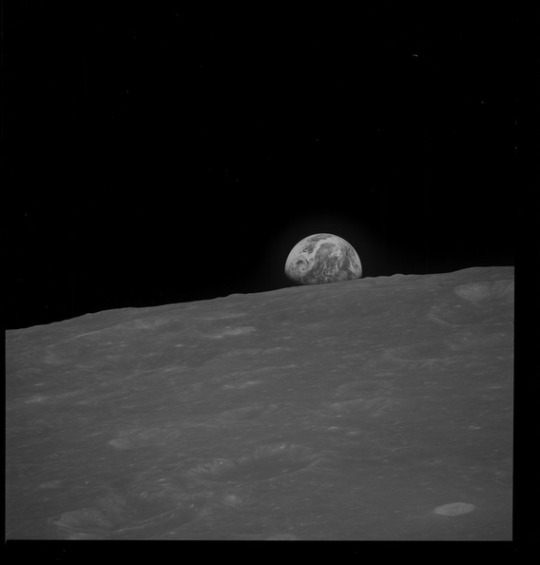
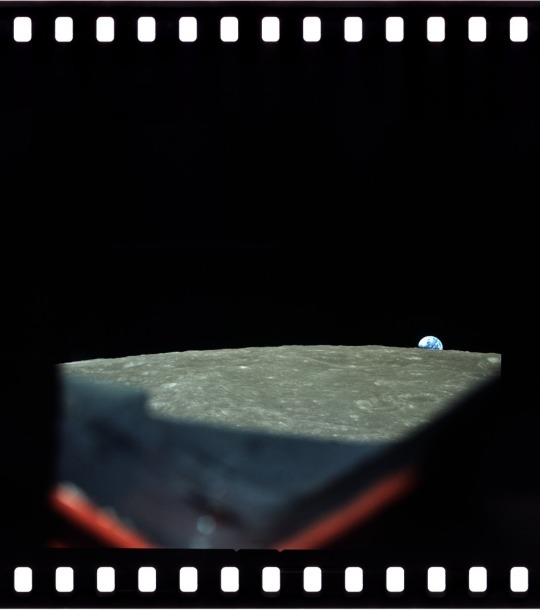

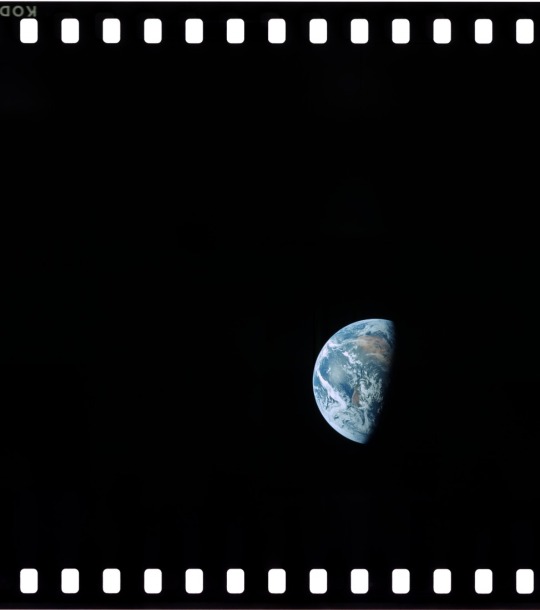

Views of Earth from Apollo 8. The crew of Frank Borman, Jim Lovell, and Bill Anders became the first humans to orbit the Moon on December 24th, 1968.

"From the crew of Apollo 8, we close, with good night, good luck, a Merry Christmas, and God bless all of you, all of you on the good earth."
101 notes
·
View notes
Text
The Earth As Seen From
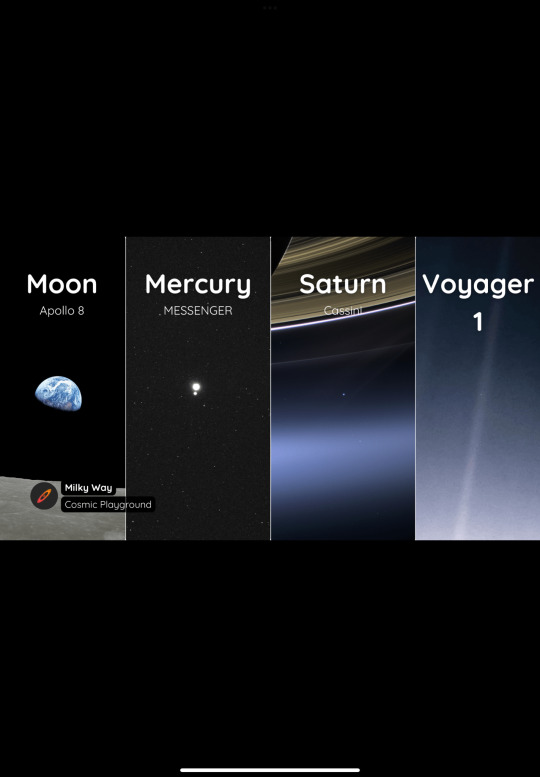
#moon#planet mercury#planet saturn#voyager 1#cassini huygens#messenger spacecraft#apollo 8#astronomy#nasa#astronomers#universe#astrophotography#nasa photos#astrophysics#outer space#nasawebb#hubble space telescope#i love astronomy#astronomy facts#astrography#astrobiology#astronauts#astronaut#astro community#astro notes#astro observations#astroblr#astro boy#planetary science#planetary nebula
289 notes
·
View notes
Text

Apollo 8 Astronauts Lovell, left, Borman, and Anders enjoy some pre-holiday cheer on the eve of their launch to the Moon.
Date: December 1968
NASA ID: link
#Apollo 8#NASA#Apollo Program#C Prime-type Mission#Kennedy Space Center#Florida#December#1968#my post
143 notes
·
View notes
Text

William Anders, Apollo 8, 1968
76 notes
·
View notes
Text
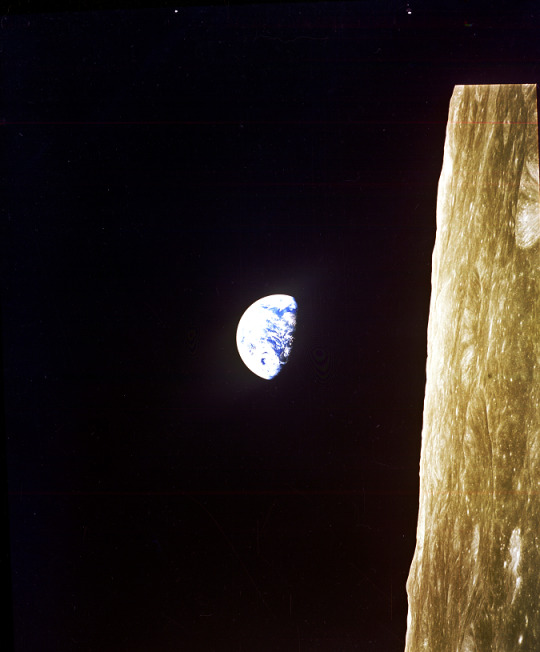
Rising Earth Greets Apollo VIII Astronauts
Record Group 306: Records of the U.S. Information AgencySeries: Master File Photographs of U.S. and Foreign Personalities, World Events, and American Economic, Social, and Cultural Life
This image is a color photograph of earth from lunar orbit. The surface of the moon appears on the right edge of the image. To the left, the earth appears to be floating in the blackness of space. Just over half of the earth is visible, the rest is in shadow.
#archivesgov#December 29#1968#Apollo 8#apollo program#nasa#nasa photos#space#space exploration#moon#1960s
169 notes
·
View notes
Text
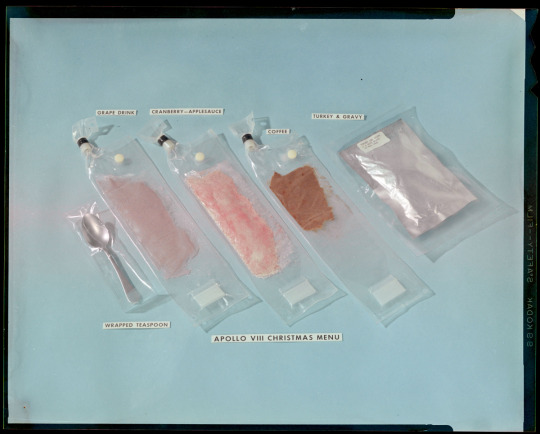
Apollo VIII Christmas Menu, 1968
224 notes
·
View notes
Photo


Our Home © NASAEarth, Apollo 8
#nasa#earth#space#astrophotography#planet#galaxy#stars#universe#sky#earth day#astronomy#solar syste#nebula#night sky#apollo 8
565 notes
·
View notes
Text
does it ever drive you crazy
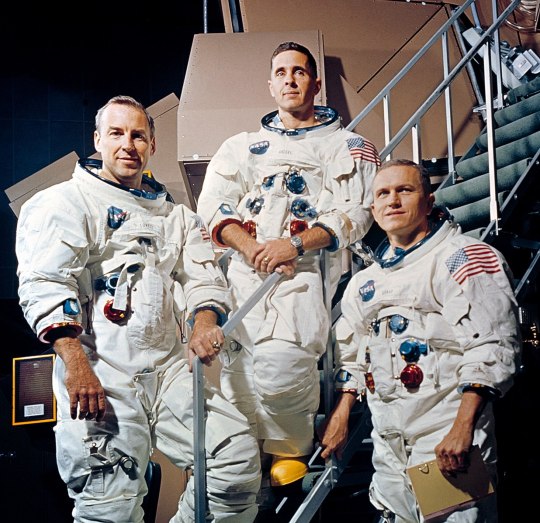
just how fast the night changes
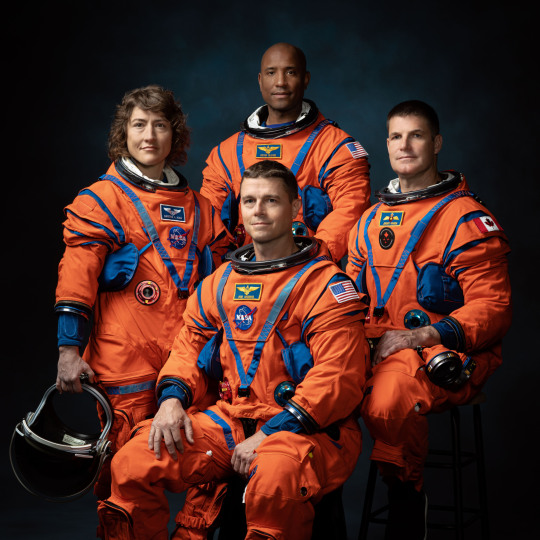
#nasa#space#science#astronomy#moon mission#moon#lunar mission#space exploration#apollo#apollo program#artemis#artemis 2#apollo 8#artemis II#jim lovell#bill anders#frank borman#christina koch#reid wiseman#victor glover#jeremy hansen
620 notes
·
View notes
Text

RIP William Anders, the Apollo 8 astronaut who took the iconic Earthrise photo in 1968.
Here's why I adore this photo, enormous cliché notwithstanding.
1) Oh this is a stupid gorgeous planet that we have. Look at it! Just look at it! This shot is close enough for earth to be immediately recognisable and breathtakingly beautiful, but not too close: it doesn't invite you to zoom in and worry about silly things like borders, it invites you to take a step back (well the camera took a step back for you!) and take it ALL in, with a different perspective – from a different celestial body, a whole other world.
2) It's not really an earthrise, though. There's no such thing as an earthrise from the moon, because it's gravitationally locked to the earth. So from our perspective it rises and sets, wanes and waxes, and we only ever see one side of it (the other one is famously dark), while from the moon's perspective the earth is either always visible, or (if you're on the dark side of the moon) never visible.
The "earthrise" effect came from the trajectory of the Apollo 8 mission: it circled around the moon, without landing, and as it was moving from above the dark side of the moon towards the light one, the earth slowly emerged into view, and appeared to "rise". This is essentially a trick photo – photography is the perfect medium for deceiving without actually lying. And what a deception!
So why does that matter? It matters because this picture is simultaneously a revelation and an illusion, thus combining the two cornerstones of science, and indeed of that basic stance of curiosity we need to maintain towards the world around us: DELIGHT and DOUBT. They don't sabotage each other, they're complementary!
So that's what Earthrise tells me: question everything, be inspired by everything. Also, we only have one home and we need to fucking share it, and not fucking destroy it. But perhaps that's better illustrated with the Pale Blue Dot and similar.

bonus pic: The dark side of the moon, with earth in the background. Photo captured by China's Chang'e 5 test vehicle in 2014, from just past the halfway point on its lunar-looping test flight. Isn't it amazing?
72 notes
·
View notes
Text

Source: https://www.nasa.gov/image-article/inside-apollo-8-spacecraft-december-1968/ Credit: NASA
"The most impressive aspect of the flight was [when] we were in lunar orbit. We’d been going backwards and upside down, didn’t really see the Earth or the Sun, and when we rolled around and came around and saw the first Earth rise. [T]hat certainly was, by far, the most impressive thing. To see this very delicate, colorful orb which to me looked like a Christmas tree ornament coming up over this very stark, ugly lunar landscape..." Bill Anders, Apollo 8 LMP, on his thoughts about taking the iconic Earthrise photograph.
[NASA Johnson Space Center Oral History Project. Edited Oral History Transcript: William A. Anders, Interviewed by Paul Rollins Houston, Texas – 8 October 1997]
RIP to another Apollo legend, 1933-2024.
64 notes
·
View notes
Text

1969, Joan Kennedy + Edward Kennedy at Apollo 8 Launch
#I have posted this before but it wasn't the full picture#1960s#1969#Joan Kennedy#Joan Bennett Kennedy#EMK#Edward M. Kennedy#Apollo 8#The Kennedys#Kennedy
34 notes
·
View notes
Text
youtube
16mm lunar surface views from Apollo 8.
23 notes
·
View notes
Text
Earth in the lunar sky is nearly 14 times larger than the Moon in Earth’s sky. Earth is also about 2.5 times more reflective than the Moon, although the exact value from moment to moment varies with cloud cover. So full Earth viewed from the Moon is about 35 times brighter than full Moon viewed from Earth. Unlike what’s implied by NASA’s Earthrise photo, snapped from the orbiting Apollo 8 command module, Earth neither rises nor sets on the Moon. Viewed from the Moon’s near side, Earth never leaves the sky. From the Moon’s far side, you might never know Earth existed at all.
— Starry Messenger: Cosmic Perspectives on Civilization - Neil deGrasse Tyson (2022)
#neil degrasse tyson#starry messenger#cosmic perspective#books#book quotes#quotes#science#nonfiction#philosophy#atypicalreads#readblr#reading#bookblr#moon#earth#apollo 8
34 notes
·
View notes
Text
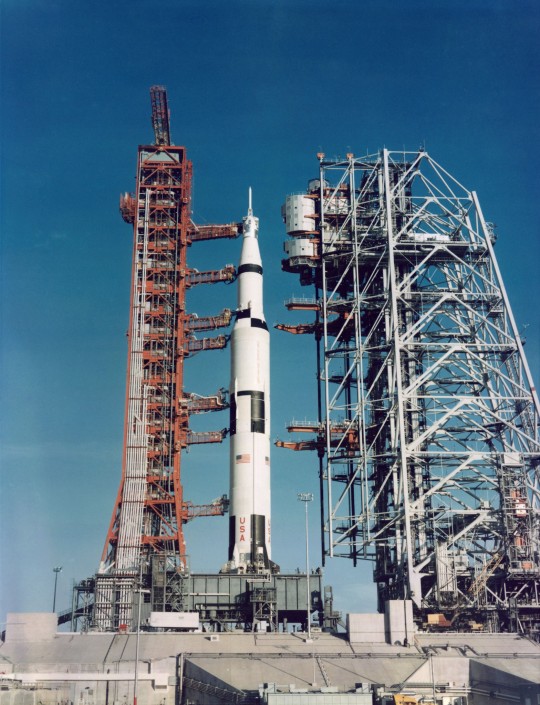

The Apollo 8 (CSM-103/LTA-B/SA-503) stack at Pad A, Launch Complex 39, Kennedy Space Center (KSC). This was during a prelaunch alert-mobile service structure pull back. (Mobile launch tower on left and mobile service structure on right.)
Date: December 17, 1968
NASA ID: S68-55424, S68-55415
#Apollo 8#Apollo CSM Block II#CSM-103#Lunar Module#Lunar Module Test Article#LTA-B#Saturn V#SA-503#Rocket#NASA#Apollo Program#C Prime-type Mission#LC-39A#Kennedy Space Center#Florida#December#1968#my post
258 notes
·
View notes